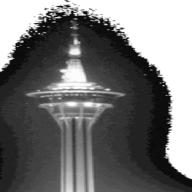EXCEL中輸入數字,如何轉為英文字,如1.1自動轉為'one point one.
多謝指教.
EXCEL中輸入數字,如何轉為英文字,如1.1自動轉為'one point one.
2007-05-18 3:34 pm
回答 (3)
2007-05-18 5:37 pm
✔ 最佳答案
沒有的, 要自己寫vba的, 參考以下網址,How to display a number as words in Excel
A VBA user defined macro function
Excel does not contain a built in function that will display a number as a series of words (i.e. a text string) but a search in Google will uncover several user defined functions to perform this task. They can each produce slightly different results and may be suitable for different purposes.
A user defined function called WordNum(value) will accept almost any number value and convert it into a long string of words in written English. The following examples show the results that can be obtained from the function. The value can be any number up to 999,999,999.
The WordNum() function requires the following code to be copied and pasted in a Visual Basic module. Once the code has been added to a workbook, the Paste Function toolbar button should contain a new User Defined function called WordNum(). It is available to convert any values or cells containing a value into words.
Option Explicit
Public Numbers As Variant, Tens As Variant
Sub SetNums()
Numbers = Array("", "One", "Two", "Three", "Four", "Five", "Six", "Seven", "Eight", "Nine", "Ten", "Eleven", "Twelve", "Thirteen", "Fourteen", "Fifteen", "Sixteen", "Seventeen", "Eighteen", "Nineteen")
Tens = Array("", "", "Twenty", "Thirty", "Forty", "Fifty", "Sixty", "Seventy", "Eighty", "Ninety")
End Sub
Function WordNum(MyNumber As Double) As String
Dim DecimalPosition As Integer, ValNo As Variant, StrNo As String
Dim NumStr As String, n As Integer, Temp1 As String, Temp2 As String
' This macro was written by Chris Mead - www.MeadInKent.co.uk
If Abs(MyNumber) > 999999999 Then
WordNum = "Value too large"
Exit Function
End If
SetNums
' String representation of amount (excl decimals)
NumStr = Right("000000000" & Trim(Str(Int(Abs(MyNumber)))), 9)
ValNo = Array(0, Val(Mid(NumStr, 1, 3)), Val(Mid(NumStr, 4, 3)), Val(Mid(NumStr, 7, 3)))
For n = 3 To 1 Step -1 'analyse the absolute number as 3 sets of 3 digits
StrNo = Format(ValNo(n), "000")
If ValNo(n) > 0 Then
Temp1 = GetTens(Val(Right(StrNo, 2)))
If Left(StrNo, 1) <> "0" Then
Temp2 = Numbers(Val(Left(StrNo, 1))) & " hundred"
If Temp1 <> "" Then Temp2 = Temp2 & " and "
Else
Temp2 = ""
End If
If n = 3 Then
If Temp2 = "" And ValNo(1) + ValNo(2) > 0 Then Temp2 = "and "
WordNum = Trim(Temp2 & Temp1)
End If
If n = 2 Then WordNum = Trim(Temp2 & Temp1 & " thousand " & WordNum)
If n = 1 Then WordNum = Trim(Temp2 & Temp1 & " million " & WordNum)
End If
Next n
NumStr = Trim(Str(Abs(MyNumber)))
' Values after the decimal place
DecimalPosition = InStr(NumStr, ".")
Numbers(0) = "Zero"
If DecimalPosition > 0 And DecimalPosition < Len(NumStr) Then
Temp1 = " point"
For n = DecimalPosition + 1 To Len(NumStr)
Temp1 = Temp1 & " " & Numbers(Val(Mid(NumStr, n, 1)))
Next n
WordNum = WordNum & Temp1
End If
If Len(WordNum) = 0 Or Left(WordNum, 2) = " p" Then
WordNum = "Zero" & WordNum
End If
End Function
Function GetTens(TensNum As Integer) As String
' Converts a number from 0 to 99 into text.
If TensNum <= 19 Then
GetTens = Numbers(TensNum)
Else
Dim MyNo As String
MyNo = Format(TensNum, "00")
GetTens = Tens(Val(Left(MyNo, 1))) & " " & Numbers(Val(Right(MyNo, 1)))
End If
End Function
2016-03-03 11:17 am
excel中怎么输入度分秒,并计算角度。。
2007-05-21 8:12 am
如果唔想用VBA,
就要用好多個cell, 用好多equation, 黎轉囉.
就要用好多個cell, 用好多equation, 黎轉囉.
參考: 俾$20我就幫妳整!
收錄日期: 2021-04-23 21:35:10
原文連結 [永久失效]:
https://hk.answers.yahoo.com/question/index?qid=20070518000051KK00473

